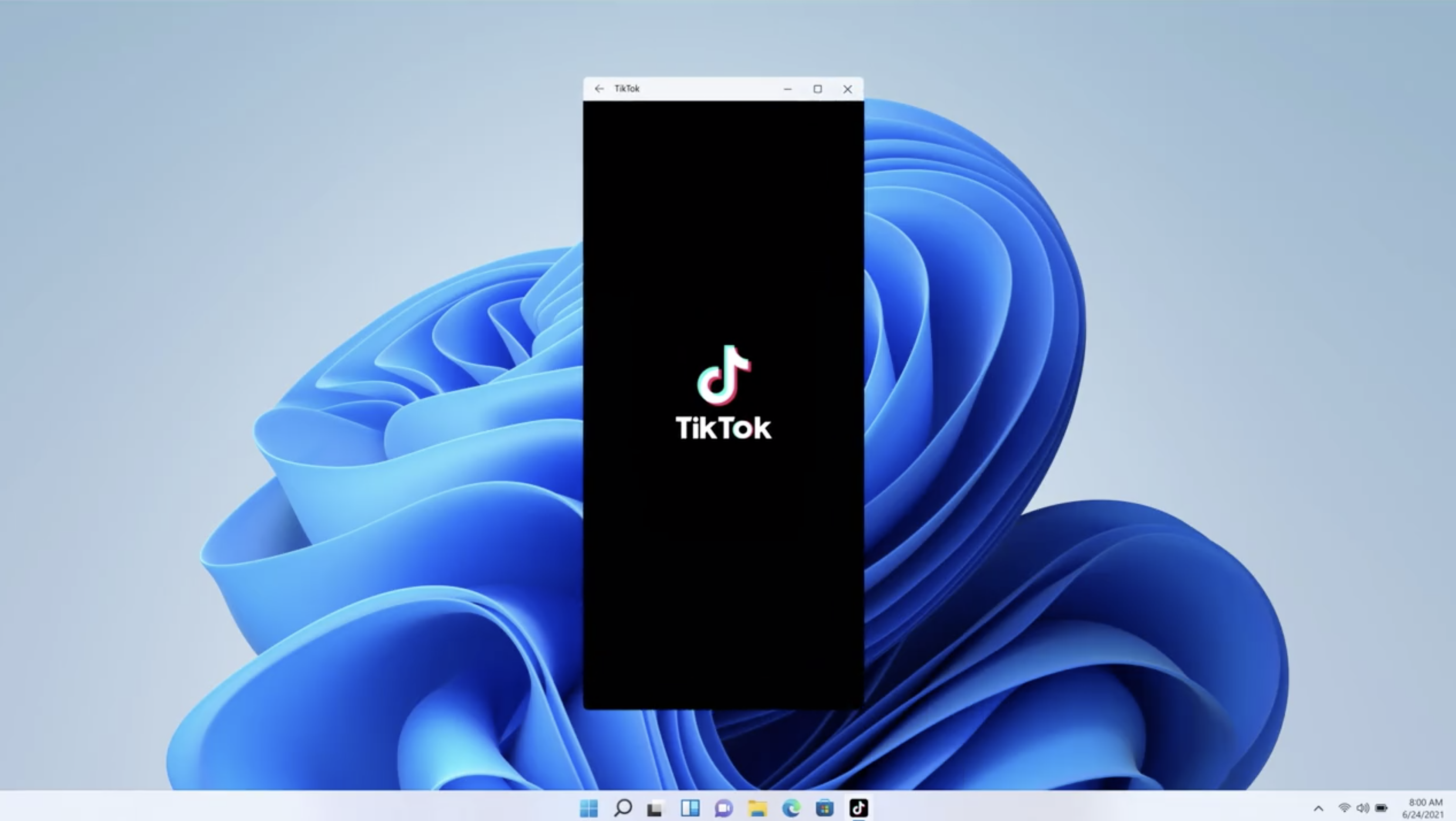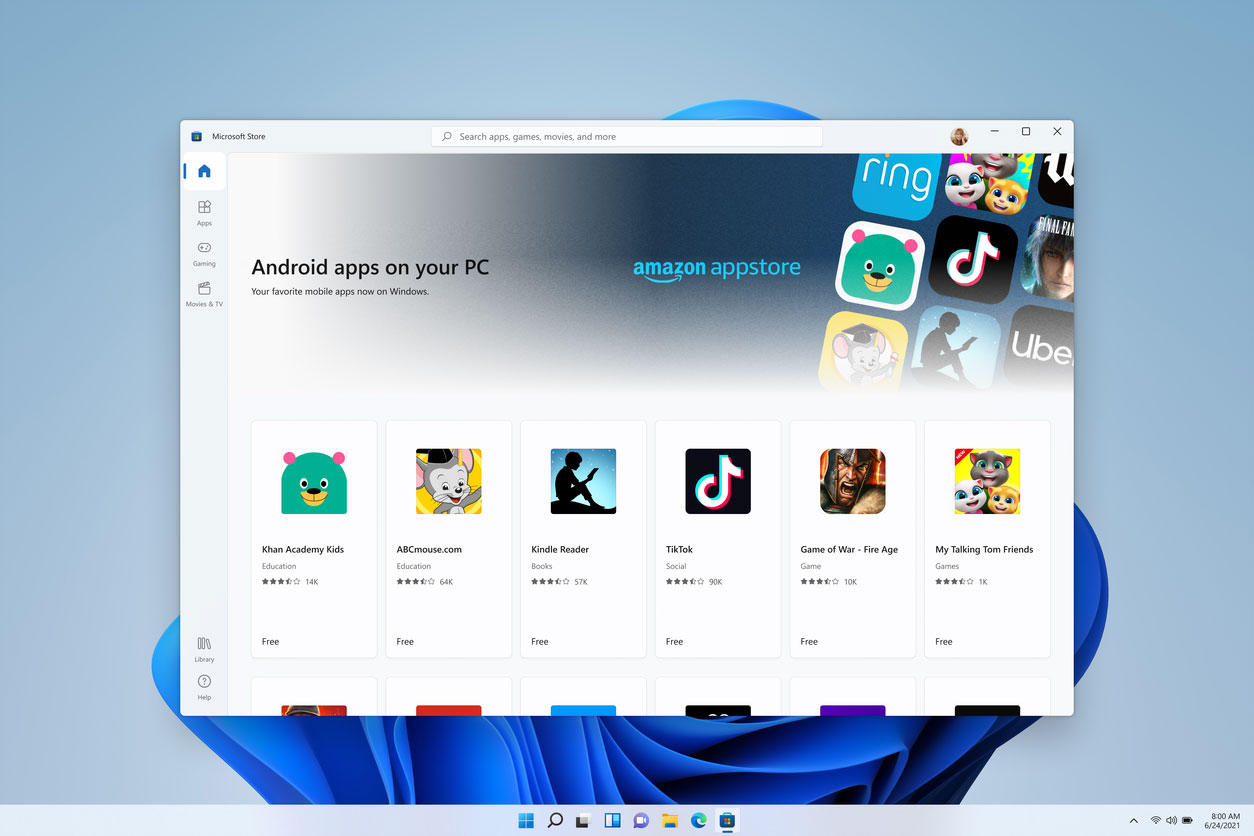
At Microsoft's Windows 11 unveil event Thursday (June 24), the software giant announced that PC apps will not be alone on this new OS. Windows 11 will run Android apps — but that does not mean that the Google Play app store will be integrated into Windows 11.
Instead, Android apps will be available to download through the Amazon Appstore which is integrated into the Microsoft Store. It's a convoluted workaround, but it's at least one way to get TikTok running natively in Windows 11.
There's only one problem: The Amazon Appstore isn't that great.
- Windows 11 release date, beta and all the new features announced
- Windows 11 vs Windows 10: Here's what's new
- Plus: Windows 11 won’t work on your PC without a TPM — how to check
The Amazon Appstore is primarily used to download apps on devices that use Amazon's Fire OS operating system. Fire OS is a mobile operating system based on Android, meaning that apps published on the Google Play app store can be ported by developers over to the Amazon Appstore.
But given that there are nearly 3 billion Android users, developers tend to prioritize development for Google Play before focusing on any ancillary stores.
Heading on over to the Amazon Appstore for Android webpage, the standard suite of apps are available for download. This includes popular apps like Duolingo, Asphalt 8, Minecraft and Angry Birds. But when compared to the Google Play app store, the selection is greatly lacking.
Games like Garena Free Fire, Call of Duty Mobile and League of Legends: Wild Rift are nowhere to be seen. It's not just games: Cash App, DoorDash and PicsArt are all absent from Amazon Appstore, too. Windows 11 will let you sideload Android apps in addition to using the Appstore, but if you don't have the technical knowledge to do so, what's "officially" available is limited.
Sign up to get the BEST of Tom's Guide direct to your inbox.
Get instant access to breaking news, the hottest reviews, great deals and helpful tips.

So any plans to turn a Microsoft Surface Pro 7 or any other 2-in-1 laptop into a makeshift Android tablet will be a nonstarter unless Microsoft can do a better job of integrating Android apps at large.
The underlying technology for Android apps on Windows 11 comes way of Intel. As detailed in a press release trumpeting the move, "Intel Bridge Technology is a runtime post-compiler that enables applications to run natively on x86-based devices... Intel’s multi-architecture XPU strategy provides the right engines for the right workloads by integrating leading CPU cores, graphics technology, artificial intelligence accelerators, image processors and more."
Tom's Guide reached out to Intel for further clarification on if Intel Bridge Technology for Android apps on Windows 11 would apply to AMD chips or Arm-based Qualcomm processors. While the major processor manufacturers rarely comment on one another's plans, Intel did say that its technology would be universally integrated into Windows 11, at least for x86 chips.
"Intel believes it is important to provide this capability and has designed Intel Bridge technology to support all x86 platforms," said an Intel representative to Tom's Guide.
Unfortunately, not all legacy Intel processors will have Android app support. Per Intel, this includes 8th Gen Intel Core processors, Intel Pentium processors and Intel Celeron processors from the Apollo Lake generation and newer.
Either way, native Android support is a very cool feature to have in Windows 11. And given that there are at least 1 billion active Windows 10 users, most of which will likely switch to Windows 11 via the free update, that might incentivize developers to bring more Android apps to the Amazon Appstore. If that does happen, then Microsoft could get a huge leg up on the Mac App Store with Windows 11.
Imad is currently Senior Google and Internet Culture reporter for CNET, but until recently was News Editor at Tom's Guide. Hailing from Texas, Imad started his journalism career in 2013 and has amassed bylines with the New York Times, the Washington Post, ESPN, Wired and Men's Health Magazine, among others. Outside of work, you can find him sitting blankly in front of a Word document trying desperately to write the first pages of a new book.

